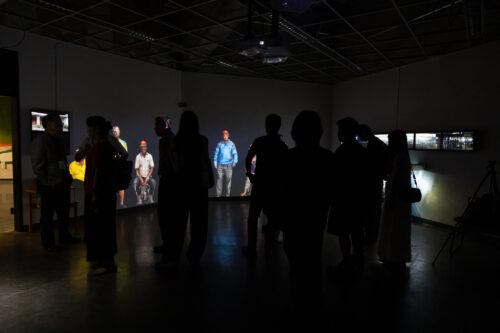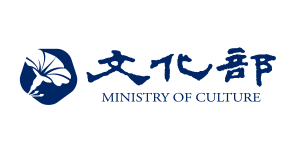In Observer Pattern, the roles of machines in media art are compared and examined based on behavioral design patterns. Through interactions between machines and their surroundings, artists translate intuition, emotions and thoughts into creative production. This exhibition reveals how machines are becoming new types of observers, collaborating with humans to shape a meaningful world.
In the Observer Pattern exhibition, the roles of machines in media art are compared and examined based on behavioral design patterns. When artists are the subjects, machines are not only tools for artistic production or intermediaries in the transformation of artist concepts into works, but also play important roles in each stage. Starting with observation and with the provision of perspectives and data, we become more reliant on automated messages, further affecting the ways uncertainty is handled.
Machines extend the sensory perceptions of humans and collaborate with them. They also become observers. With a calm perspective as the starting point, they reshape how humans and the world are observed. In this hybrid human-machine environment, we need to rethink how art reflects the meaning of observation and patterns of existence.
Against the backdrop of human-machine coupling, Taiwan is an island that has long disappeared from sight, but that has also been gazed upon by empires. At the same time, we examine its values, with emphases on individual will and technology culture, and the status of emerging, but not yet fully formed, complex hybrids. Through interactions between machines and the surrounding world, artists translate intuition, emotions, and thoughts into creative production. We attempt to reveal how machines are becoming new types of observers and working with humans to shape a meaningful world.
-

Ghosts of Google
Pei-Ting Hsieh (TW)
The images in the artwork are all captured by taking screenshots from Google Street View, and then processed to remove backgrounds, allowing these portraits, erased by AI, to become the subjects of renewed contemplation.
-

Looking at Between
Kun-Yu Lu (TW)
This artwork utilizes 3D scanning technology to recreate real-life individuals within a virtual environment. Reflecting on the digital age, relationships between people seem increasingly to resemble virtual states within reality.
-

Positive Electricity – Plan
Zu-Hao Zheng (TW)
Neuroscientist Marcus E. Raichle suggests that daydreaming acts as a stress response, regulating external stimuli. He posits that while daydreaming, brain circuits enter a closed state, generating „random noise“ akin to a TV without signal or a sleeping computer. Contrasting this with personal experience, I have noticed unconscious daydreaming is common.
-

Spectacle Extension
Tzu-Yung Kuo (TW)
Can we trust what we see? How confident are we in discerning reality? Should we continuously seek the truth? How much of the flashing scenes remain in our memory? It is difficult for us to distinguish between reality and memory.
-

Tangivirtuality 2
Daniel Chiang (TW)
Sensory experiences serve as our primary methods to acquire information. The knowledge and intuition derived from these experiences constitute the fundamental basis for human thought and cognition. In this artwork, virtual scientific images intertwine with real sensations of touch.

Department of New Media Art, Taipei National University of the Arts (TW)
The Department of New Media Art at Taipei National University of the Arts is a pioneer in Taiwan for combining the humanities with cutting-edge technology in a forward-looking discipline. It explores new frontiers in interdisciplinary and future-oriented art while encouraging students to express themselves creatively through integrated technological applications.
Credits
Department Chair: Jia-Ming Day / Co-curators: Lien-Cheng Wang, Yen-Ju Lin / Artists: Daniel Chiang, Kun-Yu Lu, Pei-Ting Hsieh, Tzu-Yung Kuo, Zu-Hao Zheng / New Media Art Faculty: Chun-Chi Lin, Der-Lor Way, Fujui Wang, Goang-Ming Yuan, Jia-Ming Day, Lien-Cheng Wang, Jun-Jieh Wang, Shih-Wei Sun, Shu-Yu Lin, Yu-Hsiung Huang



